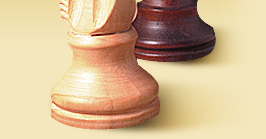INTRODUCTION
Today there are two main Keyserling(k) lines;
A branch of Counts
A branch of Barons.
Why are some Keyserlingks Barons and some Counts? Here is a short overview of the evolution through city councilor rank, to knights, to barons, to counts.
CITY COUNCILORS - 1300s AND 1400s
During the Middle Ages, many cities in north Europe banded together in a trading system called the Hansa. In medieval Hansa cities only those who did not earn their keep with their hands were considered to be of councilor rank, equivalent in rank to knights living outside cities on estates. If councillors sons set themselves up on a landed estate, they were counted among the knights. And vice versa, if a knight went to a city, he would be considered to be councilor material.
It is possible that the Keyserlingks might trace themselves back to the ministerial (service in a knightly family) Keselingks, who are documented in the north German County of Tecklenburg from 1225-on. They were, however, apparently not knights, but considered to be of unfree status.
A surer date for a first known descendent is 1443-1468 when Albert Keselingk was mayor of the Hansa city Herford in north Germany. His family can be traced back to the early 1300s in the neighboring city of Bielefeld, where it also possessed the rank of town councilor.
BALTIC KNIGHTS 1492-ON
At first, the whole Baltic area conquered by the crusaders was called Livland. The land was divided between the Order of the Brethren of the Sword (later incorporated into the Teutonic Knights), the bishops and the nobles there.
Mayor Albert Keselingks son Hermann shipped out to the Baltic on crusade in 1492. As son of a town councilor and mayor, he was considered to be of knightly rank. There he found others like himself from north Germany, specifically Lower Saxony and Westphalia, serving under the Brethren of the Sword. In 1495 he was granted a Baltic feudal estate by the Order. The estate Ussecken was added in 1500, and the two estates Duppeln and Okten in 1521. Since then the Keyserlingks belonged to the Baltic nobility.
BARONS 1631
While in Germany the lower nobility gradually fell under the sway of the more powerful princes and kings, in the Baltics the nobles remained without overlords, except for a period of time in Courland. Their four noble corporations of Estonia, Livonia, Oesel and Courland remained until WW I independent political actors under Sweden, Poland and finally within Russia.
Following the Reformation, the Catholic Church was suppressed. Lands belonging to the Order in the Baltics and the other church lands were divided up and state sovereignty was taken over by the nobles and their corporations.
The four Baltic noble republics of Estonia, Livonia, Oesel and the Dukedom of Courland emerged. They were run by the four noble corporations (and for a while by a Duke in Courland) possessing the right to the German language, Lutheran religion, and control over land and government. These rights were recognized by the various overlord sovereigns. The first three areas (Estonia, Oesel and Livland) were taken over from Sweden by Russia in the 1720s, Courland from Poland in 1795.
These four noble corporations did not have the power to create nobility. But they could recognize nobility and in the 17th century began to set up official registers to that effect.
In 1631, a great grandson of the original Hermann Keyserlingk, Johann, registered the Keyserlingk family in the first class of the Courland nobility. To achieve this, he demonstrated that his family was from Westphalia, where it had long been considered to be of knightly rank, that he possessed at least 16 direct knightly predecessors, and that he owned estates.
On the basis of the Polish Sigismundi Augusti Privilege, this meant the Keyserlingks were recognized as barons (Freiherr, or free gentleman in German).
Two brothers, Johann from the Usseken estate, who registered the family, and Ernst on Okten, are the source of the two branches of Keyserlingks, the barons and the counts:
(1) From Baron Johann-Usseken descend the barons.
(2) From Baron Ernst-Okten descend the four Keyserlingks who became counts in the
East Prussian-Baltic and West Prussian-Neustadt lines.
THE FOUR NEW COUNTS IN THE 1700s
In the 1700s four Keyserlingks from Baron Ernst-Okten line, three of them cousins as well great-grandchildren of Baron Ernst-Okten, became counts.
1742 Hermann
Created imperial count of the Holy Roman Empire by Frederick August, King of Poland and Marshall of the Holy Roman Empire for services to the Saxon and Polish thrones. This is the Bach/Goldberg Variations patron and great diplomat.
1744 Johann Gebhard
Created Prussian count by Frederick the Great. Ambassador of Brunswick-Wolfenbuettel in St Petersburg. He married Carolina Countess Truchsess von Waldburg, who brought the Rautenburg estate into the Keyserlingk family, for which Johann Gebhard was made count.
When Johann Gebhard died, Carolina married her nephew by marriage, Heinrich Keyserlingk, son of Hermann Carl (1) above. He was also diplomat in Germany, Austria, Russia and Poland. These two (Heinrich and Carolina, nicknamed Cleo and Javotte) were friends of Kant in Koenigsberg. Carolina (Cleo) painted the little book of salons and dinners with Kant and others. They began the East Prussian-Baltic Rautenburg line
1777 Otto-Ernst
Created Prussian count by Frederick the Great for buying an estate in West Prussia. Father of the West Prussian-Neustadt line
1786 Dietrich
Created Prussian count. Nephew of #2 above, who sold him Okten, later became Courland chancellor. No children.
THE TWO COUNT
Two count lines still exist ?/P>
the East Prussian -Baltic Rautenburg line and
the West Prussian-Neustadt line.
See also a 1965 letters from Robert Wendelin Keyserlingk to Bob Keyserlingk on the subject at:
http://www.box.net/shared/630rin3vy5
http://www.box.net/shared/pnmff0rf0s
Sander
Sept 2009 | 
